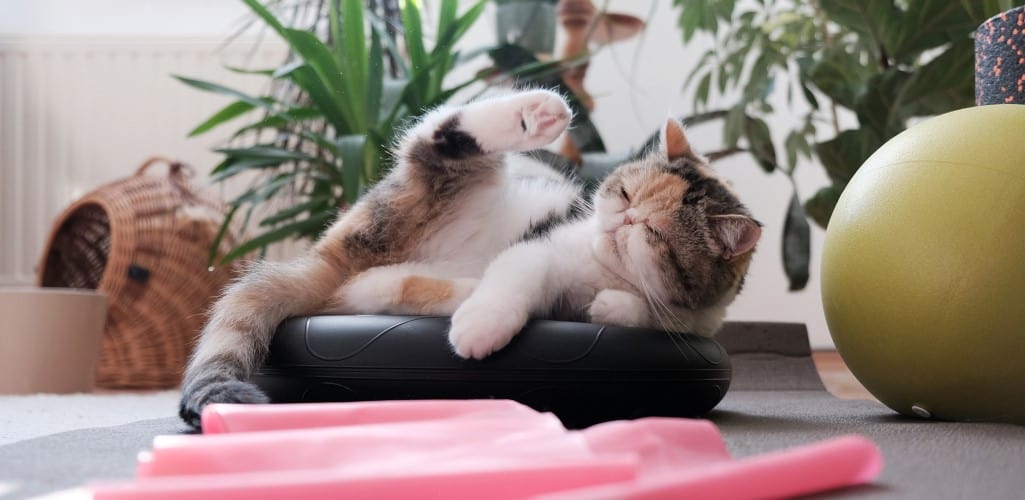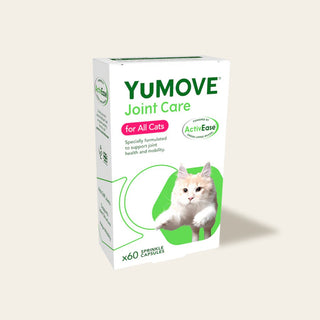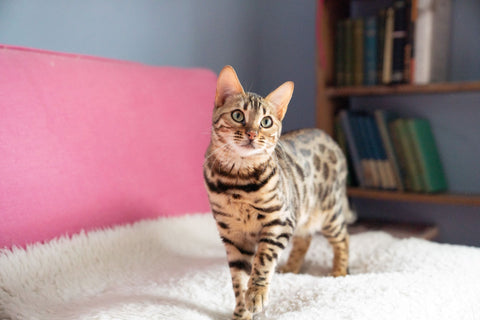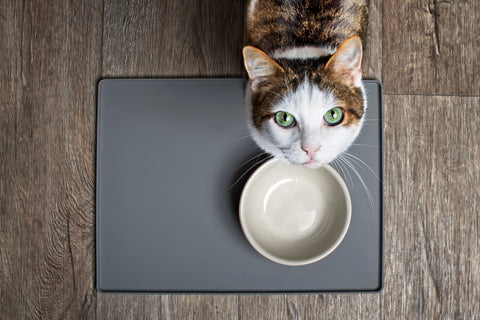

How much exercise does your cat need?
Cats are born gymnasts. They manage to achieve incredible acrobat feats that would make an Olympian blush, just in the course of leading their everyday lives. Leaping up on top of a wall, elegantly balancing as they strut across the roof of the shed, floating their way along the edge of a fence like a tightrope walker and squeezing through a tiny gap in the hedge are just a few of their trademark tricks.
But while our cats can seem totally confident and regal when they’re strutting their stuff, how much exercise should they actually be getting?
Why cats need exercise
A cat probably wouldn’t consider that it was exercising as it went about its daily activities. Possibly because the word ‘exercise’ implies effort, which doesn’t quite fit with the worldview of the felines we know and love.
But your cat does need a certain amount of physical activity in order to keep them healthy, maintain an ideal weight, and help their joints, ideally aided by cat joint supplements, to stay mobile and their muscles strong.
Exercise is also important for your cat’s mental stimulation, helping them to stay interested in the world around them.

From kitten to cat
As to how much exercise your cat needs, this varies according to the stage of their life and their level of mobility.
Kittens are often highly active bundles of fluff who see your home as one huge, exciting activity centre. As they age, though, cats will tend to slow down and be less tempted to treat every piece of furniture as an irresistible hiking challenge.
Fitting in exercise around snoozing
Cats also have to fit in a good deal of snoozing every day. In fact, cats sleep an average of 15 hours a day, with some – especially kittens and older cats – stretching that to 20 hours a day. When you look at some of the wilder, larger cousins of our domestic cats – lions, for example – this seems to be something of a general feline trend. Long periods of rest, interspersed with bouts of activity.
This means that any exercise they take has to fit in around those all-important catnaps in your favourite armchair.
How far does your cat roam?
When your cat does decide to leave that armchair, where do they go and what do they do?
A BBC 2 programme, The Secret Life of the Cat, attached GPS devices and tiny ‘cat cams’ to the collars of various cats in Surrey and watched to discover where they went and what they got up to. They found that the cats often roamed around 150 metres (500 feet) from home, covering several acres of land each day.
Even more impressively, US researchers, using a similar method and looking at both domestic and feral cats, found that one feral cat had a home range of 1,351 acres.
How much exercise is enough?
While there isn’t a strict one-size-fits-all amount of exercise that every cat should be getting each day, a good rule of thumb might be to aim for 30 minutes of active time with your feline. As always, however, you should always take guidance from your vet on matters like these.
If you have an outdoor cat, you probably don’t need to worry too much about them getting their daily dose of exercise. You can be pretty sure that they will be practising their jumping, climbing and stalking skills amply – though this comes with potential negative consequences for local wildlife.
On the other hand, if your cat mostly lives indoors, you may need to engage them in two or three play sessions each day to ensure that they’re getting enough exercise.
How to encourage your cat to exercise
It’s rare to see a cat on a leash, and there’s a reason for that. It doesn’t come naturally to most felines to be ‘constrained’ or directed. So, leaving that option aside, let’s look at some other, more successful ways to exercise your cat.
-
Give your cat a tower to climb
Cats love to be up high, looking down on the world. Encourage them to exercise by climbing up a cat tower or tree. There are some wonderfully inventive designs available, and you can even design your own bespoke tower to suit your cat’s specific needs and desires.
-
Play with a catnip toy
Cats just can’t resist the alluring aroma of catnip. Apparently, it’s something to do with the oils and compounds the plant contains, including ‘nepetalactone’, causing your cat to experience pleasurable sensations. So, it figures that if you add catnip to a toy, you’re doubling the chances that your cat will engage in playful exercise.

-
Lure them with a fishing pole toy
Attach a ball, feather, or other toy to a cat fishing pole, dangle it in front of your cat and let them play chase. Make sure you allow them to catch their prey every now and then, so they feel as though they’re winning. Keep the toy safely out of reach when exercise time is over to avoid it becoming a choking hazard.
-
Give them a cardboard box
Never underestimate the old-fashioned fun that your cat can get from jumping into and out of a cardboard box. It costs you nothing and your cat will have hours of pleasure from stalking the box, investigating what could possibly be going on inside (nothing), jumping out with a fright (at nothing), and then starting all over again.
-
Play catch with string
While we’re talking about affordable, low-tech ideas, how about a piece of string? Simply drag it along the floor and let your cat chase it, pounce, and catch it. By playing together with your cat, you can help to improve the bond between the two of you – all while your feline friend is getting their daily exercise.
Also, check out our article on how to exercise your older cat for some games specifically targeted at senior feline citizens.
Feed their animal instincts
The PDSA recommends giving your cat short 5-10 minute bursts of exercise and feeding them soon after the play session ends, so that the food acts as a reward. And remember that feeding them YuMOVE Joint Care for Cats with their meals can help to support their joint function.
How do you get your cat to exercise?
Do you have any brilliant ideas for encouraging your kitty to stay fit? Please head over to our social media pages and share your thoughts and pictures with us on Facebook and Instagram.




